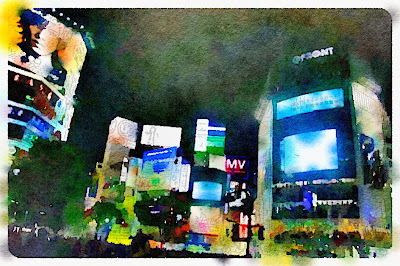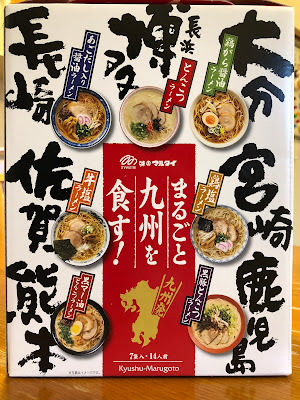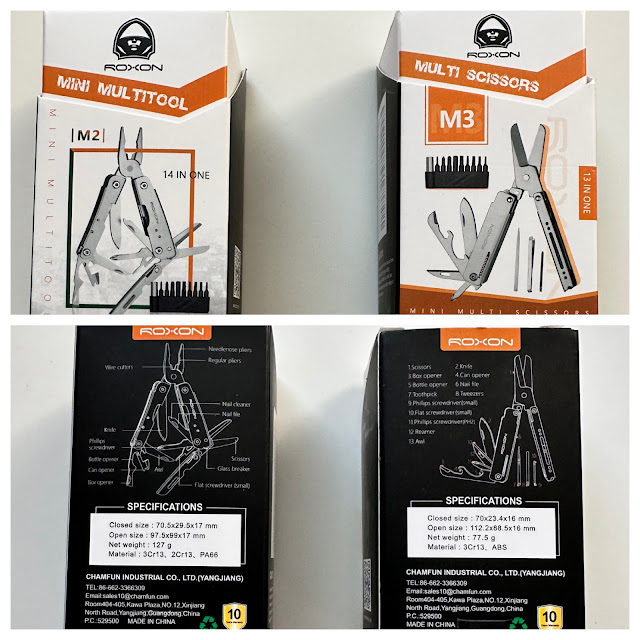Writing and Research for Tokyo Stories
I took the summer off to write a book and have a great trip to BC. The trip was only okay in the end, but the book writing was completely successful. I have been blogging about Japanese pop culture and Tokyo for nine years and felt that I could do something that was different and quite substantial for topics I love. So, in four months, I wrote the book, Tokyo Stories - Visitors' Introduction to the City, with an additional couple of months of editing.
This is a different kind of book about visiting the city as it uses the power of storytelling to teach and entertain. It is a book that introduces you to modern Tokyo and the Japanese pop culture that makes it so fun to visit. It gives you a big head start on planning for any visit and easily supplements regular guidebooks and online sources of information.
When writing this book I wanted to use stories to introduce facets about life in Tokyo and places to visit. I think I succeeded with my fantastical stories set in a modern Tokyo that has pop culture come to life in unexpected ways. I had ideas for a number of stories, but ended up focusing on just four tales that cover a wide variety of topics. The stories are all written so that they are gender-less with you as the protagonist, which made for some interesting work too.
The first story in the book, Neko Astray, is a story about helping a lost cat get home. It is funny how I outlined it and wrote the first two pages of that story, but I never got further than that for over a year. When I seriously started writing, I managed to get the first draft out in four days, writing it at a Starbucks. I guess I was finally able to focus on it. I actually wrote the stories first and then the non-fiction information about Tokyo. After blogging about Tokyo for so long, the guide parts were not all that hard, it just took time to write.
When researching the non-fiction parts of the book I did some Google Trend searches for what was popular. I based my book topics on what I thought was important, and what people were searching for. I was also steering clear of anything related to accommodations, places to eat, nightlife, etc., as these are all better online with Tripadvisor or Google. Below is a list of topics I checked for that are ranked against each other.
It is kind of an interesting list isn't it? People really don't care about walking tours, but really want to know about sushi, places to see like Ginza or Harajuku, 100 yen stores, pop idols, tours, ramen, places to stay, and shopping in general. They are also hunting online for guides to the city, but the topics they look for are spread to the four winds. I cover most of these topics to some extent in my book, but more from an informational perspective - to give background on these subjects. As I said earlier, use Google, Tripadvisor, etc., to do the actual lookups.
I also wondered about sales for this e-book. I'm pretty sure I'm not going to get rich, but this book represents my love for Tokyo and Japanese pop culture. This is a big enough reason to write original stories and put to use my knowledge about these two things.
Sales ranking is strange as it is a relative indicator of sales over the day to few days. The lower the rank, the better your book is selling. If you haven't sold a book in a long time, your rank will be in the millions. Selling a few copies when your sales are low can make your rank jump in the tens of thousands or a hundred thousand. I picked a selection of guidebooks about Japan and recorded their sales ranks one day. I found many different sets of numbers making sense of the rankings online, so these are just my educated guesses for the sales of these ebooks. Basically, some guidebooks sell okay as ebooks, but others sell very slowly with one or two sales every few days. If I'm lucky I'll sell a copy every few days. I'm pricing the book in the range of $2.99 - $4.99, the price of a latte, so I hope people find the pricing reasonable.
The ebook is now available on Amazon Canada and USA. More information about the book can be found here.
This is a different kind of book about visiting the city as it uses the power of storytelling to teach and entertain. It is a book that introduces you to modern Tokyo and the Japanese pop culture that makes it so fun to visit. It gives you a big head start on planning for any visit and easily supplements regular guidebooks and online sources of information.
When writing this book I wanted to use stories to introduce facets about life in Tokyo and places to visit. I think I succeeded with my fantastical stories set in a modern Tokyo that has pop culture come to life in unexpected ways. I had ideas for a number of stories, but ended up focusing on just four tales that cover a wide variety of topics. The stories are all written so that they are gender-less with you as the protagonist, which made for some interesting work too.
The first story in the book, Neko Astray, is a story about helping a lost cat get home. It is funny how I outlined it and wrote the first two pages of that story, but I never got further than that for over a year. When I seriously started writing, I managed to get the first draft out in four days, writing it at a Starbucks. I guess I was finally able to focus on it. I actually wrote the stories first and then the non-fiction information about Tokyo. After blogging about Tokyo for so long, the guide parts were not all that hard, it just took time to write.
When researching the non-fiction parts of the book I did some Google Trend searches for what was popular. I based my book topics on what I thought was important, and what people were searching for. I was also steering clear of anything related to accommodations, places to eat, nightlife, etc., as these are all better online with Tripadvisor or Google. Below is a list of topics I checked for that are ranked against each other.
Search Term
|
Percentage
|
Places to visit in Tokyo
|
100
|
Harajuku
|
81
|
Sushi
|
78
|
Daiso
|
78
|
Ginza
|
78
|
Japanese Food
|
75
|
Learn Japanese
|
75
|
Flights
|
72
|
Hotels
|
71
|
Shibuya
|
69
|
Best time to visit Tokyo
|
68
|
Travel
|
65
|
Ramen
|
63
|
Akihabara
|
63
|
Shinjuku
|
63
|
Tokyo Station
|
60
|
Japanese Idol
|
57
|
AKB48
|
53
|
Tokyo Tour
|
48
|
Tsukiji
|
48
|
Skytree
|
48
|
Stay
|
41
|
Visit
|
39
|
Tower
|
39
|
Food
|
36
|
Robot Restaurant
|
32
|
Guide
|
31
|
Shinagawa
|
30
|
Kyary Pamyu Pamyu
|
28
|
Robot
|
26
|
Odaiba
|
25
|
Konbini
|
23
|
Don Quijote
|
23
|
Subway
|
21
|
Shopping
|
20
|
Fashion
|
20
|
Sakura
|
19
|
Narita Express
|
18
|
Shrine
|
15
|
Imperial Palace
|
13
|
Golden Gai
|
13
|
Godzilla
|
12
|
Kabukicho
|
11
|
Dining
|
10
|
Omotesando
|
10
|
Gundam
|
8
|
Godzilla
|
7
|
Shiodome
|
7
|
Yakitori
|
6
|
Must see
|
5
|
Cherry Blossoms
|
3
|
Souvenirs
|
3
|
Highlights
|
2
|
Yurakucho
|
2
|
Advice or Tips
|
0
|
Walks
|
0
|
It is kind of an interesting list isn't it? People really don't care about walking tours, but really want to know about sushi, places to see like Ginza or Harajuku, 100 yen stores, pop idols, tours, ramen, places to stay, and shopping in general. They are also hunting online for guides to the city, but the topics they look for are spread to the four winds. I cover most of these topics to some extent in my book, but more from an informational perspective - to give background on these subjects. As I said earlier, use Google, Tripadvisor, etc., to do the actual lookups.
I also wondered about sales for this e-book. I'm pretty sure I'm not going to get rich, but this book represents my love for Tokyo and Japanese pop culture. This is a big enough reason to write original stories and put to use my knowledge about these two things.
Amazon Sales
Rank, June 5, 2018
Book
|
Sales Rank
|
Estimated
Copies Sold
|
Across
Tokyo
|
95,626
|
1 – 2
|
Super
Cheap Japan
|
50,323
|
2 – 3
|
Cool Japan
Guide
|
11,397
|
5 – 15
|
A Geek in
Japan
|
49,653
|
5 –
10
|
Lonely
Planet Tokyo
|
12,150
|
5 – 15
|
Lonely
Planet Japan
|
4,830
|
25 – 70
|
Fodors
Japan
|
63,646
|
2 – 3
|
Fodors Tokyo
|
47,644
|
3 – 5
|
Pretty
Good Number One
|
122,825
|
< 1
|
DK
Eyewitness Japan
|
7,519
|
15 – 25
|
Sales ranking is strange as it is a relative indicator of sales over the day to few days. The lower the rank, the better your book is selling. If you haven't sold a book in a long time, your rank will be in the millions. Selling a few copies when your sales are low can make your rank jump in the tens of thousands or a hundred thousand. I picked a selection of guidebooks about Japan and recorded their sales ranks one day. I found many different sets of numbers making sense of the rankings online, so these are just my educated guesses for the sales of these ebooks. Basically, some guidebooks sell okay as ebooks, but others sell very slowly with one or two sales every few days. If I'm lucky I'll sell a copy every few days. I'm pricing the book in the range of $2.99 - $4.99, the price of a latte, so I hope people find the pricing reasonable.
The ebook is now available on Amazon Canada and USA. More information about the book can be found here.













Comments
Post a Comment